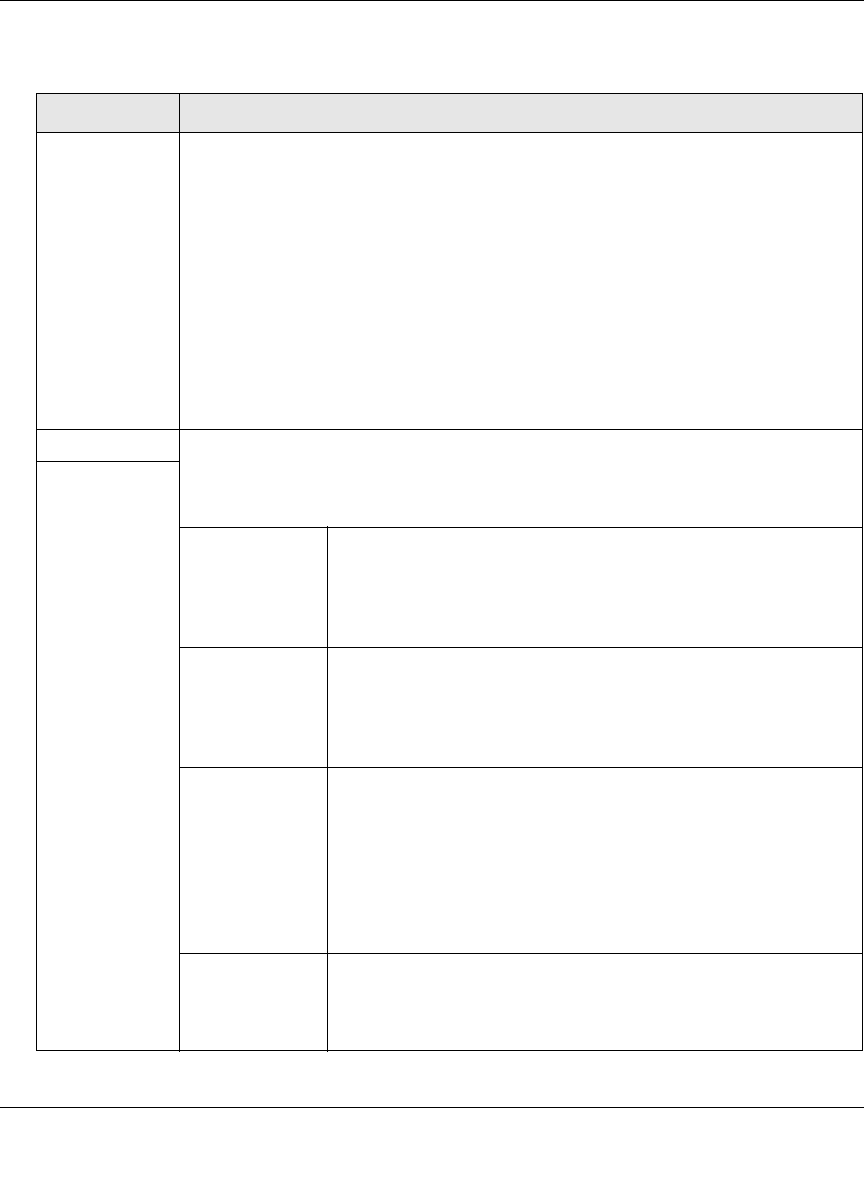User's Manual
Table Of Contents
- ProSecure Web/Email Security Threat Management (STM) Appliance Reference Manual
- Contents
- About This Manual
- Chapter 1 Introduction
- Chapter 2 Using the Setup Wizard to Provision the STM in Your Network
- Choosing a Deployment Scenario
- Understanding the Steps for Initial Connection
- Logging In to the STM
- Using the Setup Wizard to Perform the Initial Configuration
- Setup Wizard Step 1 of 10: Introduction
- Setup Wizard Step 2 of 11: Networking Settings
- Setup Wizard Step 3 of 11: Time Zone
- Setup Wizard Step 4 of 11: Email Security
- Setup Wizard Step 5 of 11: Web Security
- Setup Wizard Step 6 of 11: Email Notification Server Settings
- Setup Wizard Step 7 of 11: Update Settings
- Setup Wizard Step 8 of 11: HTTP Proxy Settings
- Setup Wizard Step 9 of 11: Web Categories
- Setup Wizard Step 10 of 11: Configuration Summary
- Setup Wizard Step 11 of 11: Restarting the System
- Verifying Proper Installation
- Registering the STM with NETGEAR
- What to Do Next
- Chapter 3 Performing Network and System Management
- Configuring Network Settings
- Configuring Session Limits and Timeouts
- Configuring the HTTP Proxy Settings
- About Users with Administrative and Guest Privileges
- Configuring Remote Management Access
- Using an SNMP Manager
- Managing the Configuration File
- Updating the Software
- Configuring Date and Time Service
- Managing Digital Certificates
- Managing the Quarantine Settings
- Performance Management
- Chapter 4 Content Filtering and Optimizing Scans
- About Content Filtering and Scans
- Configuring E-mail Protection
- Configuring Web and Services Protection
- Configuring Application Control
- Setting Scanning Exclusions and Web Access Exceptions
- Chapter 5 Managing Users, Groups, and Authentication
- About Users, Groups, and Domains
- Configuring Groups
- Configuring User Accounts
- Configuring Authentication
- Global User Settings
- Viewing and Logging Out Active Users
- Chapter 6 Monitoring System Access and Performance
- Chapter 7 Troubleshooting and Using Online Support
- Appendix A Default Settings and Technical Specifications
- Appendix B Related Documents
- Index

ProSecure Web/Email Security Threat Management (STM) Appliance Reference Manual
Monitoring System Access and Performance 6-25
v1.0, September 2009
Table 6-9. Log Query Settings
Setting Description (or Subfield and Description)
Log Type Select one of the following log types from the pull-down menu:
• Traffic. All scanned incoming and outgoing traffic.
• Virus. All intercepted viruses.
• Spyware. All intercepted spyware.
• Spam. All intercepted spam, including spam that was detected through the
blacklist, real-time blacklist, and Distributed Spam Analysis.
• Email filters. All e-mails that are intercepted because of keyword, file type, file
name, password, or size limit violations.
• Content filters. All Web sites, URLs, and FTP sites that are intercepted because
of Web category, blacklist, file type, or size limit violations.
• System. The system event logs that include all system errors, informational
messages, configuration changes, and system software updates.
• Application. All intercepted application access violations.
View All Select one of the following radio buttons:
• View All. Display or download the entire selected log.
• Search Criteria. Query the selected log by configuring the search criteria that are
available for the selected log.
Search Criteria
Start Date/Time From the pull-down menus, select the year, month, day, hours,
and minutes for the start date and time.
This field is available for the following logs:
Traffic, Virus, Spyware, Spam, Email filters, Content filters,
System, and Application.
End Date/Time From the pull-down menus, select the year, month, day, hours,
and minutes for the end date and time.
This field is available for the following logs:
Traffic, Virus, Spyware, Spam, Email filters, Content filters,
System, and Application.
Protocols Select one or more checkboxes to specify the protocols that are
queried.
The following protocols can be selected:
• For Traffic, Virus, and Spyware logs: SMTP, POP3, IMAP, HTTP,
FTP, and HTTPS.
• For the Spam log: SMTP and POP3.
• For the Email filters log: SMTP, POP3, and IMAP.
• For the Content filters log: HTTP, FTP, and HTTPS.
User The user name that is queried.
This field is available for the following logs:
Traffic, Virus, Spyware, Spam, Email filters, Content filters, and
Application.










